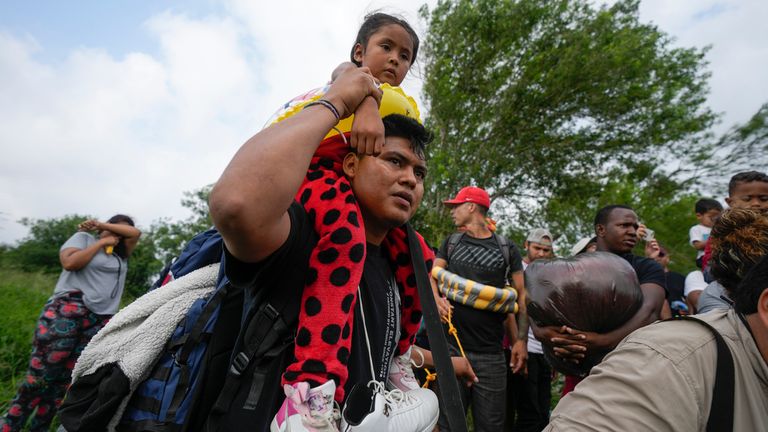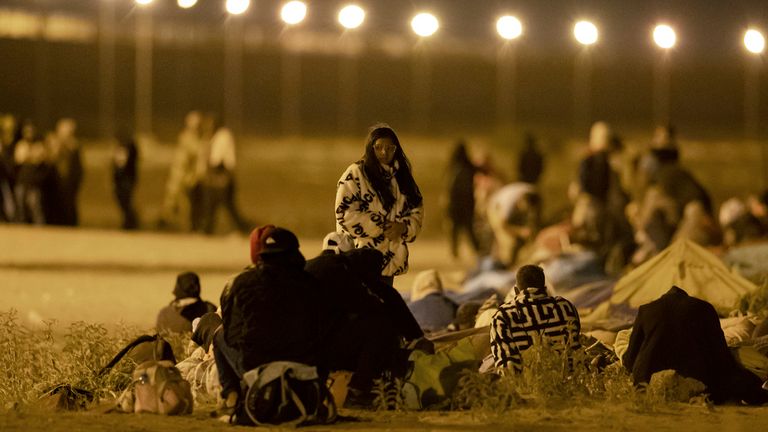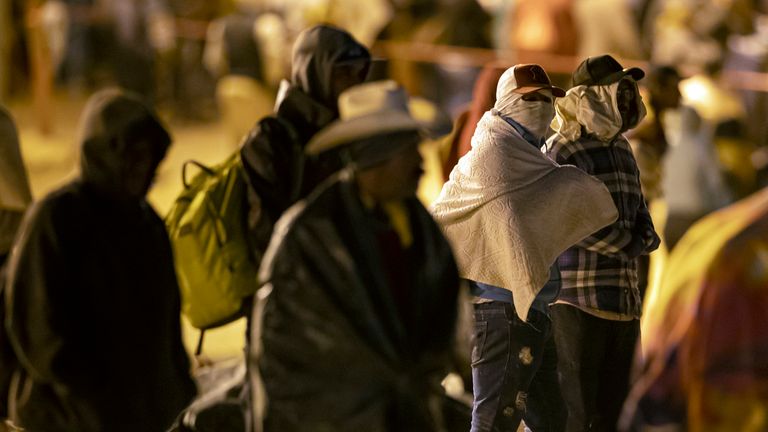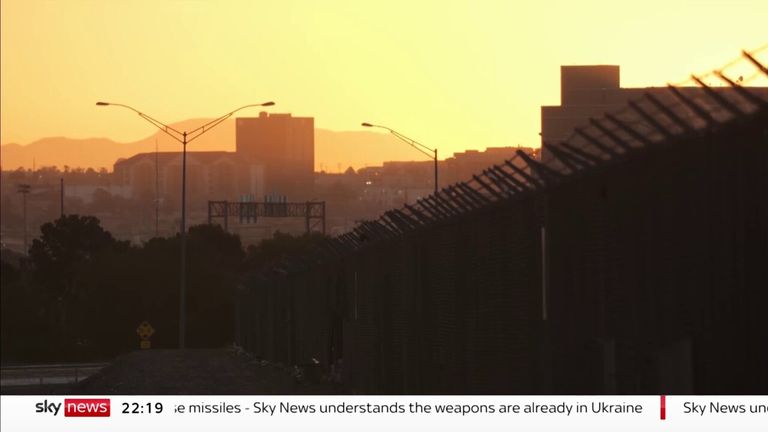Thousands of migrants have been making their way to the US border as the Title 42 immigration law changes.
The rule, which had enabled the swift expulsion of migrants, has now expired.
Record numbers had made their way to the US southern border in the hope of crossing before the midnight deadline.
Read more:
Why thousands of migrants are trying to cross US border
The El Paso church that has become a symbol of the broken US immigration system
Amid uncertainty and misinformation surrounding the change in entry restrictions, many fear that it will make access to the US more difficult.
Tens of thousands have made their way north through Mexico towards border crossings as the clock ran out on Title 42.
Sky News witnessed several hundred migrants being rounded up by the border wall at El Paso in Texas by US Border Patrol guards, who escorted them onto buses to transport them to a nearby processing centre.
In recent weeks, many migrants have been left stranded. Even those arrivals who are given court dates to claim asylum are made to wait, in some cases as long as four years.
In El Paso, Sky News spoke to Yandel Mackenzie, from Venezuela, who told me he had been sleeping in the street outside the Sacred Heart Church for 15 days.
He has been given a court date for an asylum application, but not until 2027.
“I have the papers with the court dates for 2027. The hearing with the judge is at 8.30am. What we need is bus fare so that we can get to our destination,” he said.
His friend, Wilmer Romero, also from Venezuela, said: “I want to leave already because look at the situation we’re in.
“We’re sleeping on the floor and eating whatever we can manage to get a hold of. We came to this country to progress and move forward but that’s just life, it’s the things we have to endure so that we can do something with our lives.”
Read more:
Biden administration proposes tougher rules at border
Maryeli Rivas travelled to El Paso alone with her two small children.
She said: “My journey has been a little tough because I’m alone with my children and we’ve had scary experiences. No one has helped me on my way over here, no one has tried to help me.
“On the train, a lot of things happened to me and when I arrived (in Mexico), so I decided to turn myself in and I was detained for four days. I’ve been here for a month now because I didn’t have the means to travel. It’s been tough.”
As Title 42 ends, migrants will face new restrictions on entry.
They won’t be allowed in if they arrive at the border without first applying online, or seeking asylum in a country they passed through to reach the United States.
Anyone caught crossing the border illegally won’t be allowed to return to the US for five years and, if they do, they face criminal prosecution.
Human rights groups have criticised the new rules, saying they wrongly assume safety for migrants in countries outside the US, and efficiency of an online application system that has proved unworkable for the vast majority.
The restrictions are being introduced in tandem with other measures to encourage migrants to enter the US legally.
This includes plans to set up US immigration centres in different countries as well as an expansion of “humanitarian parole” for 30,000 people per month from Haiti, Cuba, Venezuela and Nicaragua.
Under the scheme, they can stay and work in the US for two years, with the support of a sponsor.






